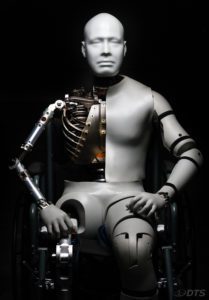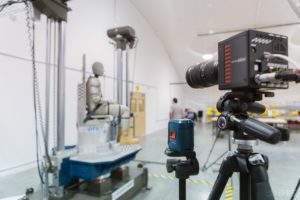A blast test dummy, officially called the Warrior Injury Assessment Manikin (WIAMan), is the first anthropomorphic test device (ATD) designed specifically to withstand underbody blasts (like IEDs). The goal of all WIAMan testing is to advance soldier protection and improve military vehicle designs.

To measure potential skeletal injuries, WIAMan currently uses 146 channels of embedded data acquisition and sensors, but is designed to support up to 180 channels. The self-contained miniature data acquisition systems are distributed throughout the test manikin and include internal power and a variety of sensors. The data collected includes six degrees-of-freedom of forces, moments, accelerations and angular velocities from sensors located along the pelvis, spine, tibia and foot/heal.

DTS, in Seal Beach, Calif., is the prime contractor to the U.S. Army for the WIAMan project. “The program provides a state-of-art test capability to assess potential skeletal injuries of Soldiers exposed to under-body blast,” said Fred Hughes, director of the WIAMan Engineering Office. “The manikin’s sophisticated biofidelity and robust sensor design provides an unmatched level of accuracy determining the potential effects of blast on Soldiers in new vehicle systems. The WIAMan effort is an example of outstanding collaboration among academia, industry, and the government.”

Leave a Reply
You must be logged in to post a comment.